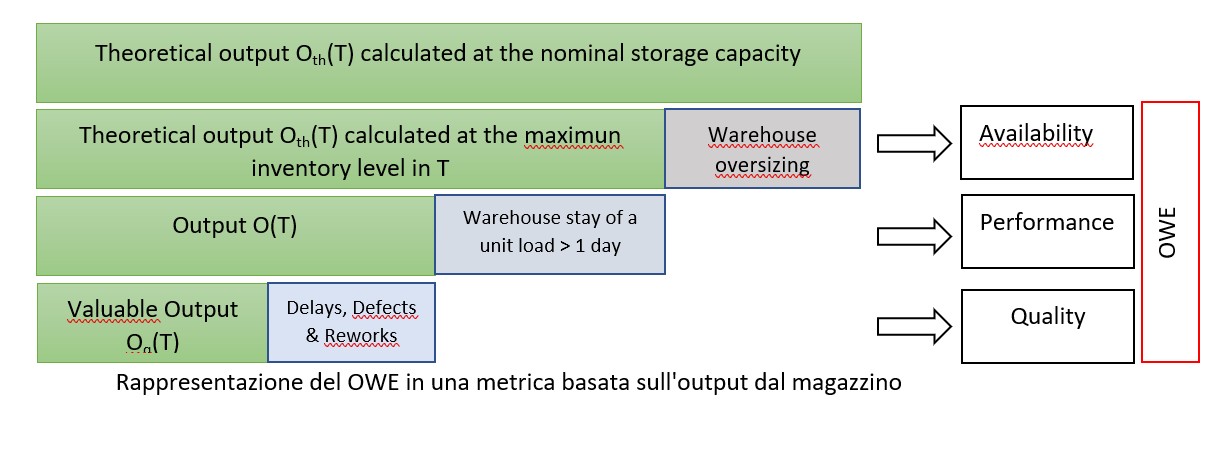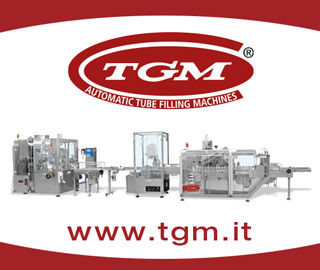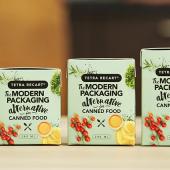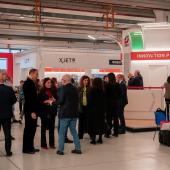What if a warehouse also had its own OEE?
Business consulting and academic culture open new perspectives on measuring efficiency in intralogistics. That’s how OWE - Overall Warehouse Effectiveness was born. News from the Polytechnic University of Turin, in the words of Alessandro Chiaraviglio
Maria Costanza Candi

When business consulting meets academic research, it offers a broader perspective on industrial production, leading to contaminations that create new opportunities. This was the case for Alessandro Chiaraviglio, an engineer and Adjunct Professor at the Polytechnic University of Turin. While consulting on warehouse efficiency for a major consumer goods company, he wondered why a KPI like OEE did not also exist for strategic areas such as logistics and intralogistics. ItaliaImballaggio met with him to learn more about OWE - Overall Warehouse Effectiveness, the new KPI that applies the principles of measuring the efficiency of a manufacturing plant to all warehouse operations.
What led to the development of this new KPI?
«The idea stemmed from a reflection on OEE - Overall Equipment Effectiveness. For those of us with a mechanical background, OEE is central because it measures the efficiency of production resources. However, a warehouse isn't a production resource since it doesn't process anything. Yet, its operational dynamics are identical to those of a manufacturing plant: a resource enters and exits after a defined time.
The project originated from an industrial case study where damaged pallets containing pre-packaged products were rejected by the customer's machine vision systems. This issue effectively halted the supply chain, requiring returns and reshipments. It was a problem similar to production downtime, impacting costs, efficiency, customer satisfaction and the sustainability of the entire process, but it was difficult to measure. That's why, together with the research group at the Polytechnic University of Turin, we decided to apply the same approach used for OEE to assess the overall performance of a warehouse.
In the first phase of the research, the focus was on evaluating warehouse efficiency purely from a physical perspective, specifically, its compartments, assuming they were able to provide an unlimited transportation service.
The second phase, which is currently underway, aims to evaluate and correlate both the physical and dynamic aspects. This makes it possible to define an indicator that takes into account both key elements: the compartment and transport system».

What are the methodological steps in your approach?
«In line with methodologies for KPIs such as OEE we first evaluated the concept of resource use, drawing a parallel with the availability of mechanics. This led us to define the first parameter, which consists of a ratio that evaluates the warehouse's occupancy rate. This, in turn, allows for the creation of a formula where the denominator represents the warehouse's maximum capacity (i.e. receptive capacity), while the numerator reflects the peak demand for storage space within the analysis interval. By evaluating a time interval and maximum load, it becomes possible to define the actual occupancy of this asset by identifying conditions of underutilisation, overutilisation, or full efficiency.
The second parameter, which we improperly refer to as performance, assumes that ideally each compartment - or each unit of cargo stored in the warehouse - has a minimum required storage interval.
The theoretical model considers a scenario where one compartment is occupied for one day. At maximum efficiency, the warehouse will accommodate one cargo unit per compartment per day. This effectively represents a very high-efficiency warehouse with rapid turnover and minimal stock, a system commonly known as ‘cross-docking’.
So, if we imagine 100 compartments with goods stored for one day, the warehouse could handle a potential daily flow of 100 cargo units. If instead we imagine 10, the warehouse could potentially move 1000 cargo units. Since variations are inevitable, this is where OWE comes in, a KPI that measures the efficiency delta between the actual movement of goods within a given time interval and the warehouse's potential flow».
A revolution in supply chain management. What are the advantages compared to traditional models?
«Compared to the turnover index, which is fundamental in logistics, OWE serves as a performance parameter that measures the efficiency of the warehouse, helping to optimise the functional arrangement of raw materials. By analysing both outflow and average stock levels, it is possible to estimate the materials present in the warehouse and their actual turnover. If they remain stationary, in fact, they represent a cost that may require a different turnover strategy. However, in some markets, maintaining a certain level of inventory and slower turnover can be beneficial for customer satisfaction, as the costs are offset by the stability it offers customers.
And let's not forget Quality, which, as in lean principles, adopts the customer's perspective, evaluating perceived value in relation to timing, the quantity of materials handled, the required quality, and the number of deliveries that meet expectations, whether on time or late. These indicators help define a ratio between value output and defined input, which in the case of OWE, is represented by the volume of the compartments. This, therefore, goes beyond the warehouse usage coefficient to assess its actual use.
Performance is one of OWE's key parameters, and it serves as an estimator of turnover indices. However, OWE is also able to define punctuality, efficiency and collateral factors such as damage, offering a clear picture of the actual flow in the warehouse.
The model can be applied to a wide variety of contexts. For example, it can be applied to forklifts or automated guided vehicles (AGVs) by defining an ideal cycle time and measuring potential efficiency based on actual operations. It provides a way to identify pathway inefficiencies, optimise space for greater efficiency with a focus on Quality, and enhance sustainability by reducing waste and consumption through precise measurement».
What are the benefits of this new KPI?
«These kinds of indicators - Chiaraviglio further notes - act as benchmarks and baselines. As a benchmark, they enable performance measurement and comparison with industry averages. As a baseline, they provide an objective metric that allows for assessing the current state and making future projections to evaluate effectiveness. While AI and Digital Twin technologies help reduce physical implementations, reliable metrics are still essential for analysing a large number of cases in order to define the best intralogistics solutions. Performance can only improve because, given the same amount of time, more material can be moved by optimising the route. This not only reduces time and material consumption, but also minimises vehicle usage, making storage capacity, i.e. the warehouse's maximum receptive capacity, more efficient».
Read more
The paper titled “Overall Warehouse Effectiveness (OWE): A New Integrated Performance Indicator for Warehouse Operations,” published in Logistics 2025, 9 (1) 7 is available here




















